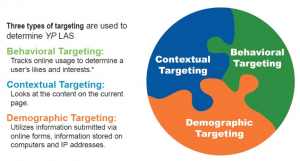In the immortal words of The Red Rocker (Sammy Hagar), “I Can’t Drive 55“. But, the same holds true of my age.
“I Can’t Drive 55“. But, the same holds true of my age.
As I write this blog, I turn “double nickels” today——at least that’s what it says on my Driver’s License. But, as they say, you’re only as old as you feel.
 I’ve been working in this ‘Digital World’ for <nearly> two decades, now. And if I’ve learned one thing: the more things Ch,Ch,Ch,Ch – Change……the more they stay the same.
I’ve been working in this ‘Digital World’ for <nearly> two decades, now. And if I’ve learned one thing: the more things Ch,Ch,Ch,Ch – Change……the more they stay the same.
I took a brief two year hiatus from the World Wide Web in the early 2010’s and could not believe the massive changes that happened in Digital during that short 24-month period…….from new concepts to basic terminology. It took me a good 4 months – just to get (re)-caught up. But, boy was it GOOD!
MORE CHANGES
Now, Google has announced that it is ‘phasing out’ third-party cookies in Chrome over the next two years. This browser accounts for 69% of all searches around the globe. The next closest browser is Safari at 17%.  This is the equivalent of Shaquille O’Neal playing basketball against a bunch of 6th graders.
This is the equivalent of Shaquille O’Neal playing basketball against a bunch of 6th graders.
In those cookies’ place, Google is hoping that it can institute a new set of technical solutions for various things that cookies are currently used for. To that end, it has proposed a bunch of new technologies (as have other browser makers) that may be less invasive and annoying than tracking cookies have become.
These new technologies are supposed to make it easier for advertisers to target certain demographics without laser-sighting down to specific people, ensure that the infrastructure many sites use for logins don’t break, and help provide some level of anonymous tracking so advertisers can know if their ads actually converted into sales.
 Both Contextual and Behavioral Targeting use intelligence to place ads in front of the most relevant, likely-to-buy shoppers they can. Both forms of targeting are also dynamic, meaning they constantly change to deliver better results when given more data.
Both Contextual and Behavioral Targeting use intelligence to place ads in front of the most relevant, likely-to-buy shoppers they can. Both forms of targeting are also dynamic, meaning they constantly change to deliver better results when given more data.
Though both forms of targeting have a lot in common, there are a couple key differences in how they go about reaching their goal that are important for you as a dealer to know about.
Behavioral Targeting monitors shoppers’ online behavior and places ads accordingly. So, let’s just say that a shopper is spending a lot of time researching cars online. This allows us to assume that the person is most likely shopping for a new car, so when they move on to other webpages and social media sites you can serve them with an ad for your dealership or even the specific model that they were looking at.
While Behavioral Targeting monitors the behavior of the online user, Contextual focuses solely on the content of webpages. For example, if you did not have access to behavioral data and were simply trying to place an ad online for a potential car buyer, where would you place that ad? Most likely somewhere related to cars, whether that be on review sites or pages about shopping for cars to engage those users on those pages.
With Contextual Targeting, ads are placed on relevant pages so that no matter who is viewing that page, the offers being shown still appeal to them. The dynamic aspect of Contextual is that as the content of a page changes, so do the ads shown on that page.
So, the biggest distinction is that Behavioral campaigns serve ads to prospects based on their past behavior while Contextual campaigns try to place ads where “best-fit” potential prospects are going to be browsing.
Both targeting techniques are powerful tools to reach shoppers, but both can miss out on potential customers on their own. That is why at BULLSEYE MARKETING GROUP, we use both Behavioral and Contextual targeting to display ads on webpages that car shoppers may be visiting and then continue to show them offers as they leave that webpage for other websites and Social Media.
But wait……….there’s MORE:
 Say that person is shopping for cars on their laptop. After a while they call it a day, hop in bed, and decide to see what their friends have been up to on
Say that person is shopping for cars on their laptop. After a while they call it a day, hop in bed, and decide to see what their friends have been up to on
Facebook using their phone before they sleep. At BMG we can track users across multiple devices and continue to serve them ads on webpages, Social Media Sites and even in apps.
How’s that for connecting with a customer?

 317-289-4965
317-289-4965